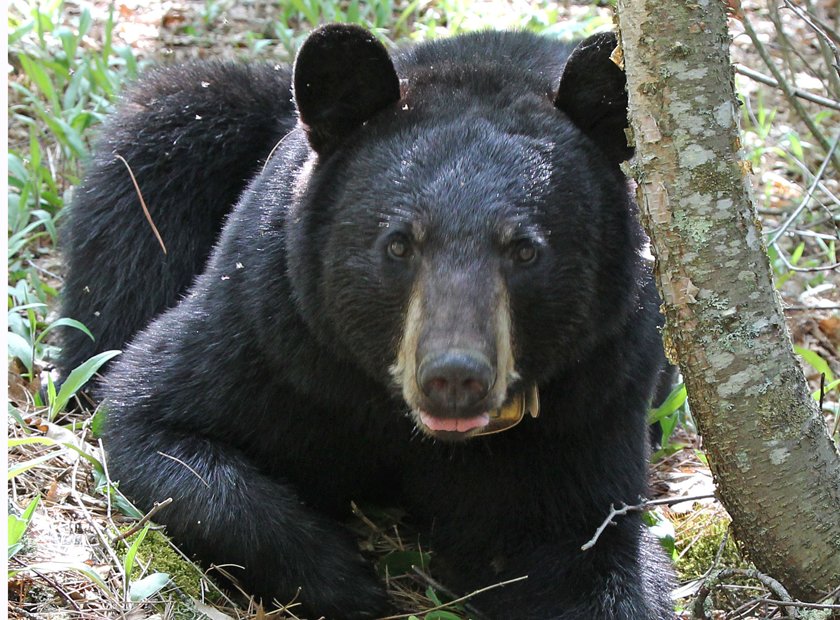Support the Timberjay by making a donation.
Dry conditions should aid bear hunters
Bear season gets underway Saturday morning, runs through Oct. 13
REGIONAL— Where there’s food, hunters should find bears when they take to the woods on Saturday for the start of the black bear season in Minnesota. A dry summer has meant a spotty food supply in …
This item is available in full to subscribers.
Attention subscribers
To continue reading, you will need to either log in to your subscriber account, or purchase a new subscription.
If you are a current print subscriber, you can set up a free website account and connect your subscription to it by clicking here.
If you are a digital subscriber with an active, online-only subscription then you already have an account here. Just reset your password if you've not yet logged in to your account on this new site.
Otherwise, click here to view your options for subscribing.
Please log in to continue |
Dry conditions should aid bear hunters
Bear season gets underway Saturday morning, runs through Oct. 13
REGIONAL— Where there’s food, hunters should find bears when they take to the woods on Saturday for the start of the black bear season in Minnesota. A dry summer has meant a spotty food supply in the woods, and that could be good news, or bad, depending on where hunters make their stands.
“It seems the bears are moving into those areas where there is food, and in those places the bears are really pounding the baits,” said longtime hunting guide Dennis Udovich, who had baits for the past two weeks in preparation for clients. But where foods are scarce, the bears seem scarce as well, notes Udovich.
While poor food years generally make hunters’ baits more attractive, Udovich notes that bears are mobile and will move out of areas with insufficient food. Bears are in what’s known as hyperphagia this time of year, which generates an intense desire for food as they seek to build up their fat reserves before heading into the winter dens later this fall.
Udovich, of Greaney, said traditional bear foods like blueberries and raspberries were tougher to come by this year due to the limited rainfall the past two months. “Chokecherries have been decent, but not as good as last year,” he said. He said there appears to be a good crop of American hazel in the Orr and Greaney area, but that species of hazel is a lot less common east of Hwy. 53. “There are a few plums out there,” added Udovich.
Given the sporadic foods, DNR Tower Area Wildlife Manager Tom Rusch expects a successful season for many bear hunters across northern St. Louis and Lake counties. Bear permits remain limited, at 3,400, so hunters won’t be facing the kind of competition they faced several years ago. “It should be a quality hunt,” said Rusch.
Udovich said he’d like to see a few more permits issued, but Rusch said the DNR is unlikely to boost permits until the bear population shows at least some degree of rebound. Aggressive bear harvests about a decade ago sliced the state’s bear population in half and despite a significant reduction in permits, the population has shown little sign of increasing from the current estimate of 12,000-15,000 statewide.
The continued high harvest of younger female bears appears to be one of the factors limiting a population rebound, said Rusch. Udovich said a trained eye can distinguish a female from a male bear, but Rusch said most hunters are unlikely to make the distinction unless a sow is trailing cubs.
Udovich said he doesn’t allow hunters he guides to shoot females with young, and he tries to educate them ahead of the hunt on some of the telltale signs of a female bear, in hopes of limiting the harvest of young females. Sows typically don’t come into breeding status until their fourth or fifth year in far northeastern Minnesota and many of those end up shot before ever contributing to the bear population, notes Rusch.
The percentage of females harvested typically increases in years with limited foods, so Rusch said he’ll be watching the harvest results with keen interest to see whether that holds true again this year. The Timberjay hopes to have local results from the opening weekend in next week’s edition. The regular bear season runs through Oct. 13.






